Introducing Corticosteroid Injections for Knee Pain
Corticosteroid injections are a common and effective treatment option for reducing inflammation and alleviating pain in the knee joint, especially in conditions like arthritis and tendinitis. The procedure involves delivering a potent anti-inflammatory medication directly into the affected area, usually with guidance from imaging techniques such as ultrasound or fluoroscopy. While these injections are generally safe and performed in outpatient settings, understanding what to expect after the treatment is vital for optimal recovery and managing potential side effects.
The Procedure: What Happens During a Corticosteroid Knee Injection
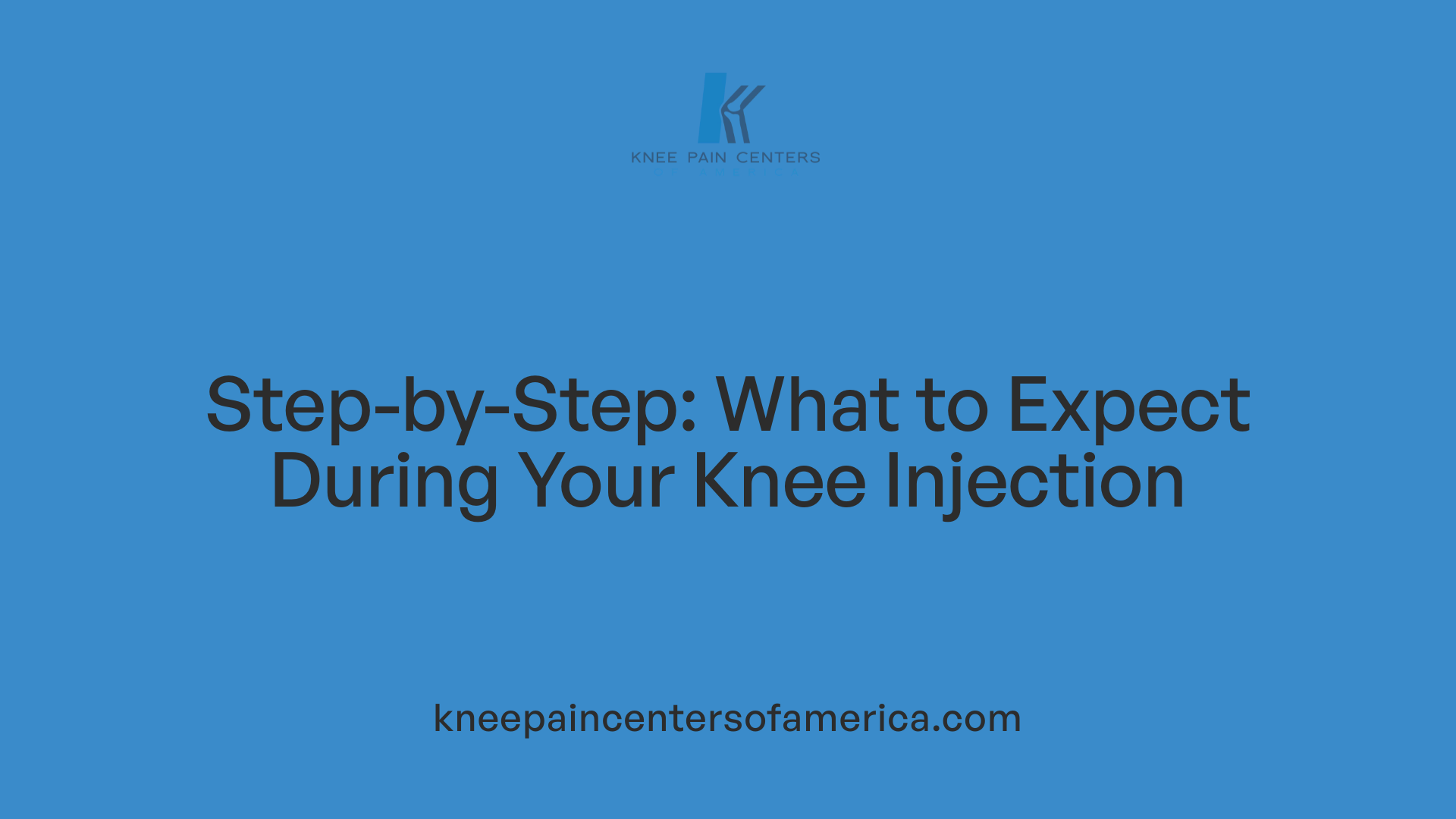
Preparation steps before injection
Prior to the injection, your healthcare provider will review your medical history, including current medications and allergies. You may be asked to change into a gown and to stop certain medications, such as blood thinners, to minimize bleeding risks. The shoulder or knee area, depending on where the injection is needed, will be cleaned thoroughly with an antiseptic solution to prevent infection.
Use of imaging guidance
To ensure the corticosteroid is delivered accurately into the inflamed joint, imaging techniques like ultrasound or fluoroscopy are commonly employed. These tools help the healthcare provider visualize the joint and guide the needle precisely, especially in complex or hard-to-access areas.
Injection materials and anesthesia
The injection typically contains corticosteroid medication combined with a local anesthetic such as lidocaine or bupivacaine. The anesthetic provides immediate pain relief during and shortly after the procedure, while the corticosteroid works gradually to reduce inflammation and pain in the joint.
| Step |
Description |
Additional Details |
| Cleaning |
Skin in the injection area is disinfected |
Ensures a sterile environment for the injection |
| Numbing |
Local anesthesia may be applied |
Reduces pain during the procedure |
| Needle guidance |
Imaging tools guide needle placement |
Increases accuracy and effectiveness |
| Medication injection |
Corticosteroid and anesthetic are injected |
Aims to reduce joint inflammation and pain |
After the procedure, most patients can return home the same day, though some may need help with transportation, especially if they experience numbness or drowsiness from anesthesia. The entire process is quick, usually lasting less than 30 minutes.
Immediate Effects and Sensations Post-Injection
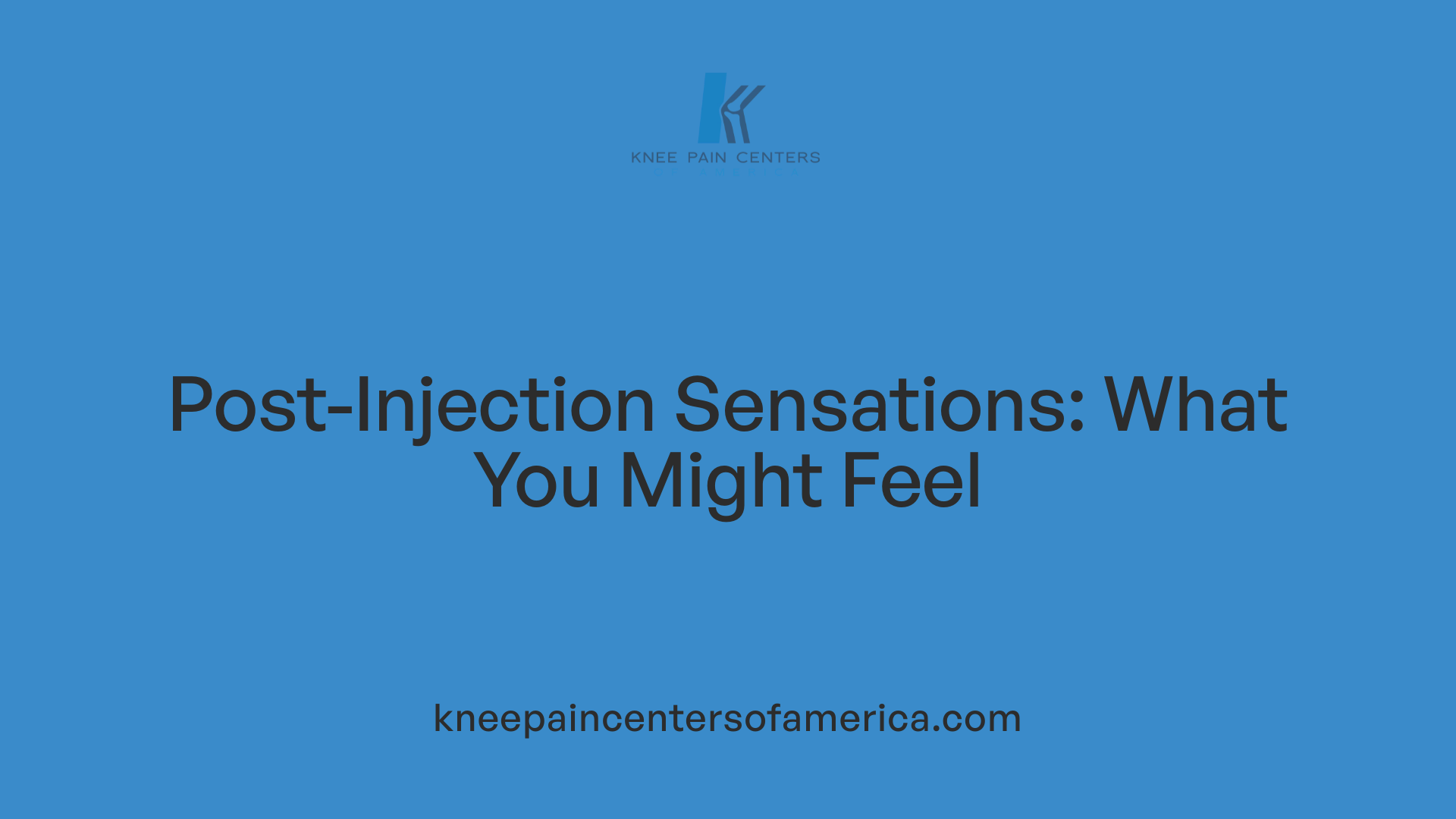 After receiving a cortisone shot, many people notice some immediate sensations and effects. Most patients feel a brief, sharp pain or soreness where the injection was performed. This discomfort usually subsides quickly within a few hours.
After receiving a cortisone shot, many people notice some immediate sensations and effects. Most patients feel a brief, sharp pain or soreness where the injection was performed. This discomfort usually subsides quickly within a few hours.
It's common to experience a feeling of warmth or redness, especially in the face and chest, shortly after the procedure. These symptoms are temporary and typically resolve within a day or two.
Some individuals may encounter a temporary flare-up of symptoms, including increased pain or swelling. This reaction can happen within the first 48 hours and is often caused by crystallization of the corticosteroid.
While minor reactions like swelling or mild pain are expected, serious side effects such as infection or allergic responses are uncommon. Nonetheless, it's important to monitor the area and seek prompt medical attention if you notice any signs of infection or unusual symptoms.
Overall, these sensations and effects are part of the normal post-injection process, and most patients recover quickly with simple home care measures like applying ice and resting.
Expected Outcomes and Duration of Pain Relief
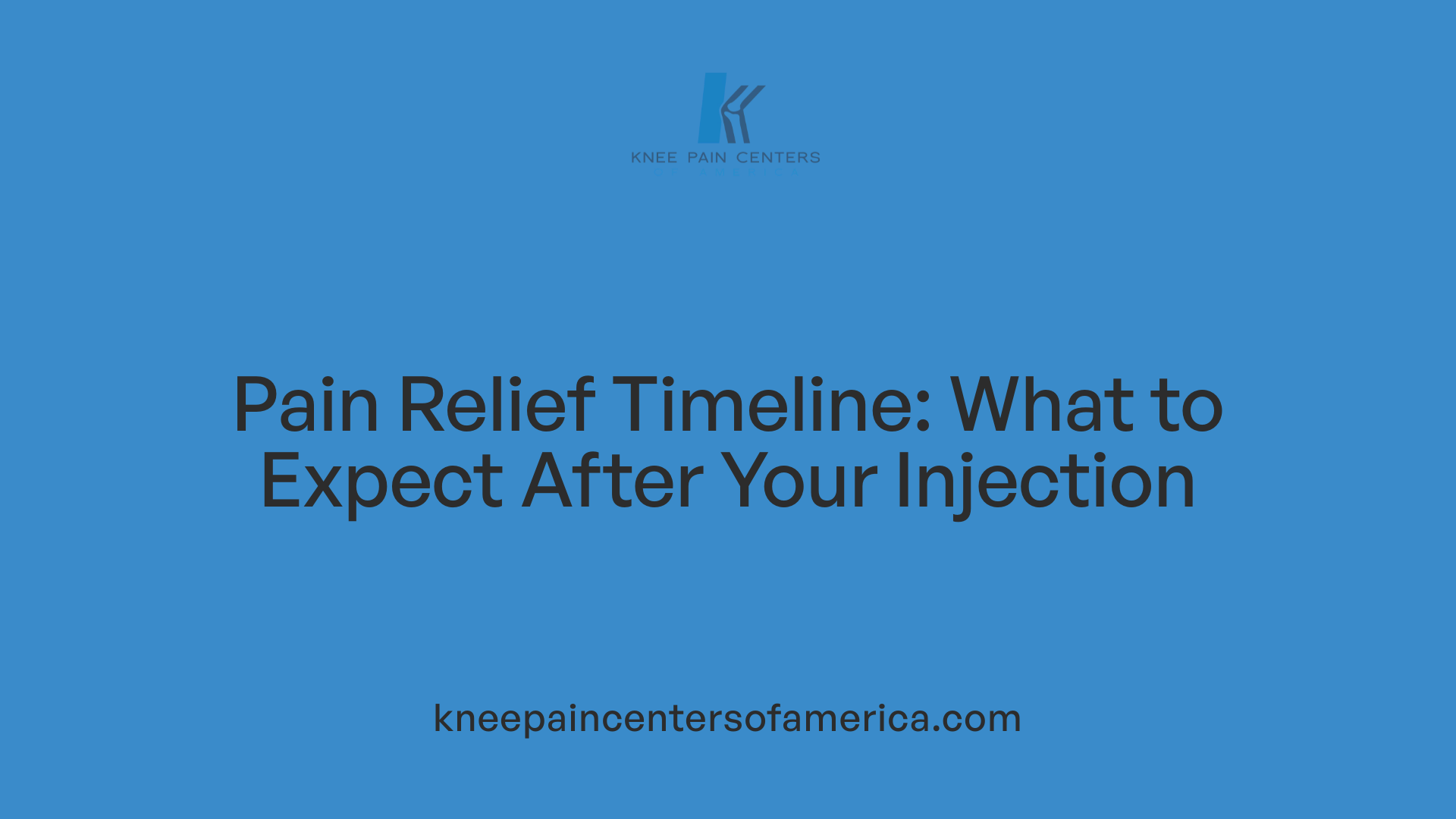 Most patients will notice improvements in joint pain and swelling within a few days to a week after receiving a corticosteroid injection. The initial relief may be immediate if a local anesthetic was used, providing quick but temporary pain reduction. The full anti-inflammatory effects of the corticosteroid typically set in several days later.
Most patients will notice improvements in joint pain and swelling within a few days to a week after receiving a corticosteroid injection. The initial relief may be immediate if a local anesthetic was used, providing quick but temporary pain reduction. The full anti-inflammatory effects of the corticosteroid typically set in several days later.
The length of pain relief varies, but generally, individuals experience symptom reduction for a period of 2 to 6 months. Some may find that their pain relief lasts longer, especially if the underlying condition improves or responds well to the treatment.
Several factors can influence how long the benefits last. These include the severity of joint damage, the specific joint treated, and the body's response to the medication. Repeated injections over time may decrease in effectiveness, and long-term use should be monitored carefully to prevent tissue damage.
In summary, the typical relief lasts from a few weeks up to several months, with the most consistent results seen within 2 to 6 months. Patients are encouraged to discuss their individual prognosis and treatment plan with their healthcare provider.
Recovery Timeline and Activity Resumption
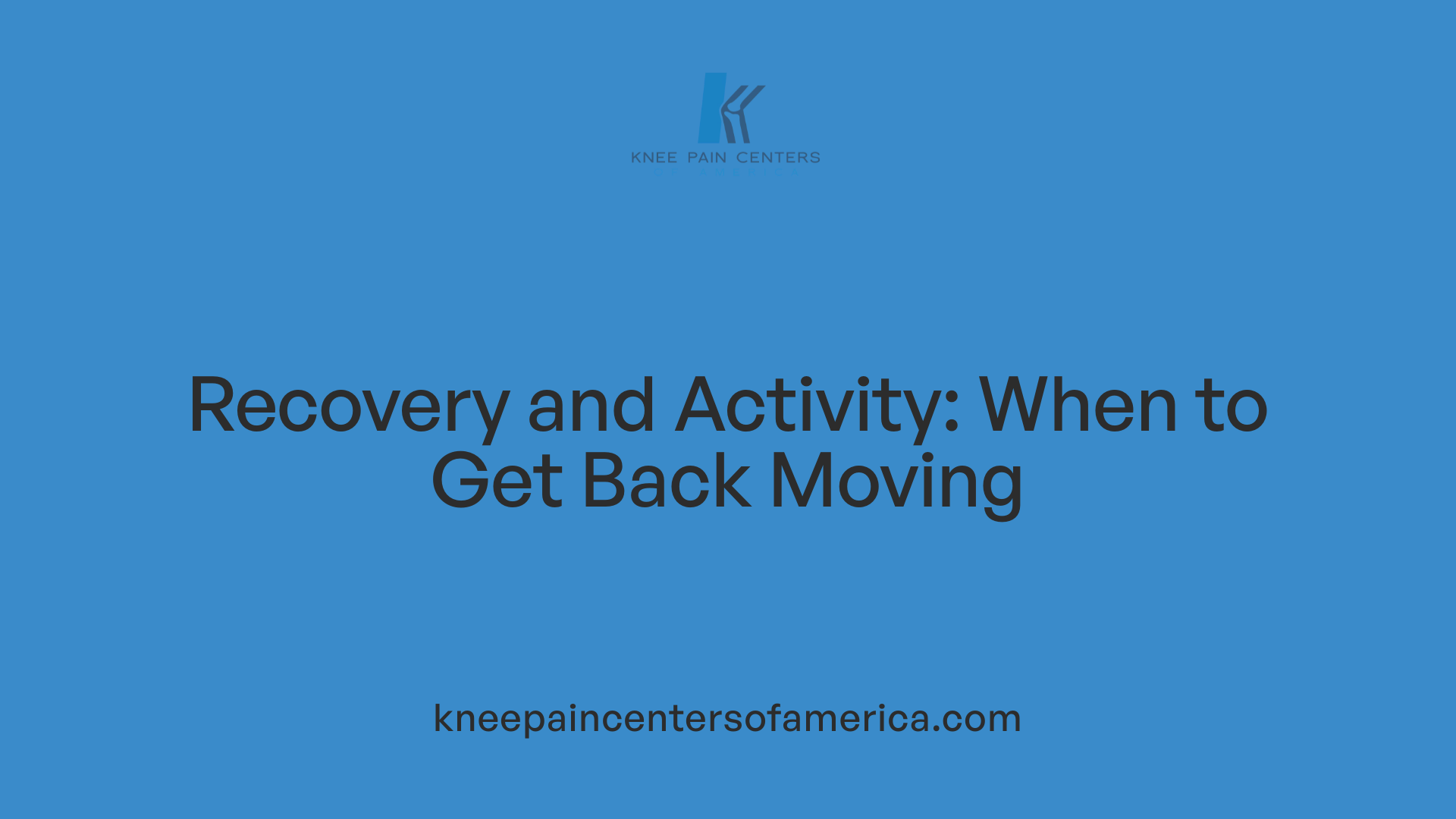
How soon can I return to normal activities after a cortisone injection in the knee?
Patients are advised to rest the knee for at least 24 to 48 hours following the injection. During this period, high-impact activities should be avoided to allow the medication to take effect and reduce the risk of further irritation. Gentle walking and light stretching are usually permitted if tolerated, helping maintain mobility without overstressing the joint.
When can I resume strenuous exercise or sports?
Strenuous activities such as running, jumping, or vigorous sports are typically postponed for at least a week or more. The exact timing depends on individual recovery and the advice of your healthcare provider or physiotherapist.
Gradual reintroduction of activity is crucial. Starting with low-impact activities like walking or swimming helps rebuild strength and flexibility without aggravating the joint. If you experience any pain, swelling, or discomfort, it’s important to pause and consult your healthcare team.
Specific activity restrictions for knee
The affected knee should be protected for a minimum of seven days, based on side effects and professional guidance. During this time, avoid heavy lifting or deep bending to prevent joint stress. After this initial rest period, activities can be slowly increased under supervision, with focus on low-impact exercises.
| Activity Level |
Recommended Duration |
Additional Notes |
| Rest and light activity |
1-2 days |
Avoid overexertion; ice and elevation help reduce swelling |
| Return to gentle walking |
3-7 days |
Monitor for pain; adjust activity accordingly |
| Resumption of sports |
After 1 week |
Gradually increase intensity; seek physiotherapist guidance |
| Full return to high-impact sports |
Usually after 3-4 weeks |
Only after clearance from your healthcare provider |
Understanding these guidelines can help ensure a smooth recovery while minimizing the risk of damaging the joint or prolonging discomfort.
Managing Side Effects and Post-Injection Care
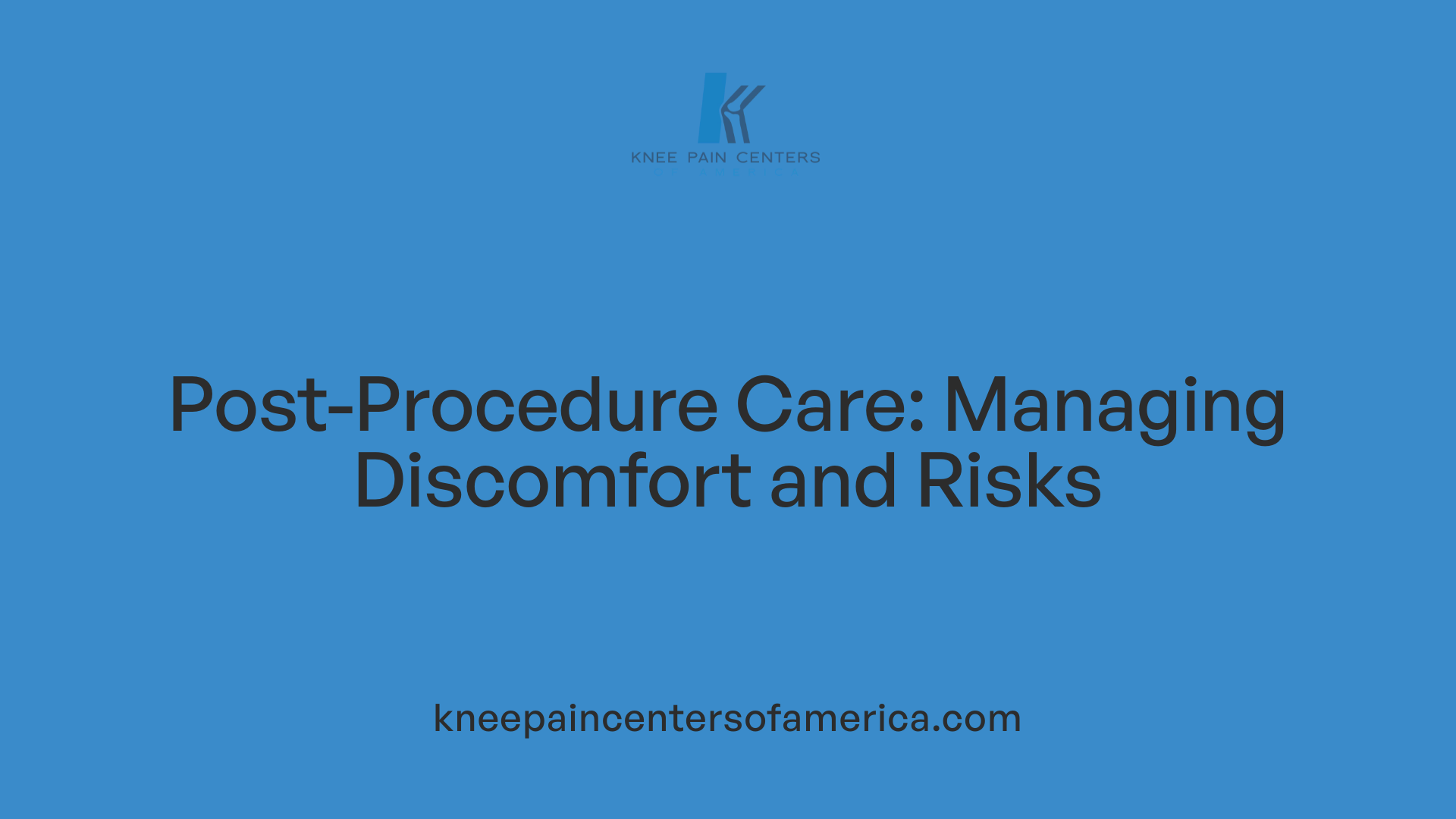 After receiving a cortisone shot, proper care is essential to ensure healing and prevent complications.
After receiving a cortisone shot, proper care is essential to ensure healing and prevent complications.
Applying ice to the injection site is highly recommended. Use an ice pack for 10 to 20 minutes at a time, placing a thin cloth between the ice and the skin to reduce swelling and numbness.
It's important to avoid hot baths, hot tubs, or saunas for at least two days following the procedure. These activities can increase inflammation or worsen swelling.
Monitoring for signs of infection is crucial. Watch for increased redness, warmth, swelling, or pus around the injection site. If these symptoms occur, seek immediate medical attention.
Patients should be vigilant about symptoms such as severe pain, fever, or worsening swelling beyond the initial days. If these develop, contact your healthcare provider promptly.
Resuming normal activities depends on the joint treated and your recovery response. Typically, resting the joint for at least 24 hours and avoiding strenuous activities helps reduce risks.
Walking short distances is generally safe after injections in leg joints, but activity levels should be limited to avoid aggravating the area.
During recovery, avoid hot baths and strenuous exercises, especially in the first two days. Instead, focus on gentle movements and rest.
In summary, immediate care involves applying ice, resting the joint, and observing for signs of complications. Prompt medical advice should be sought if adverse symptoms develop after the initial post-injection period.
Monitoring and Recognizing Potential Complications
After a cortisone injection, it's important to stay alert for signs of complications that could require medical attention. Serious issues to watch for include symptoms indicating joint infection, such as increasing redness, warmth, swelling, or fever. These signs suggest septic arthritis, which is a medical emergency.
Another concern is joint or cartilage damage caused by repeated or high-dose injections. Symptoms like worsening pain, joint instability, or reduced range of motion could suggest tissue deterioration.
Tendon ruptures and cartilage wear are also possible, especially if joint or soft tissue pain suddenly intensifies or if there's a popping sensation in the affected area. Recognizing these early signs can help prevent long-term damage.
Systemic effects might include fluctuations in blood sugar levels, particularly in diabetics, or increases in blood pressure. Mood swings or feelings of weakness should be monitored as well.
To summarize, watch for:
- Increased pain, warmth, redness, or swelling at the injection site
- Fever or chills
- Sudden joint instability or inability to move
- Significant mood changes or systemic symptoms
Early detection and prompt medical intervention can prevent serious outcomes. Always contact your healthcare provider if you notice any of these signs after an injection.
For further details, search for "complication signs after corticosteroid knee injection" to find comprehensive guidance tailored to post-injection care.
Side Effects: Mild and Serious Risks
Cortisone injections are generally safe, but it’s important to be aware of potential side effects. Mild effects are the most common and usually temporary. Patients might experience soreness or pain at the injection site, which typically lasts a few days. Skin discoloration, especially in darker-skinned individuals, can also occur around the injection area and may last for weeks or months. Skin thinning or dimpling is another mild side effect that some people notice.
Facial flushing, which means redness of the face and chest, generally happens within 24 hours after the injection and usually resolves within 1-2 days. Sleep disturbances, such as insomnia, can also occur due to the corticosteroid’s effects on cortisol levels. Additionally, some individuals might see a temporary increase in blood sugar levels, especially if they have diabetes.
While rare, allergic reactions may happen, particularly to the local anesthetic or other substances used during the procedure. These reactions can include swelling, difficulty breathing, or skin rash, and require immediate medical attention.
Systemic effects can also include mood changes, like feeling anxious or depressed, and other hormonal or systemic responses. It’s important for patients to monitor their symptoms after the injection.
Overall, most side effects are mild and resolve on their own or with simple treatments like ice packs or over-the-counter pain relief. Serious risks are uncommon but can include joint infection, tendon rupture, or cartilage damage if injections are overused or improperly administered.
For more detailed information, search for “mild and serious side effects of knee corticosteroid injections” to understand potential risks and management strategies.
Long-Term Considerations and Precautions
When considering corticosteroid injections, it's important to be aware of their limitations and potential risks. Most physicians recommend limiting the number of injections to avoid damaging joint tissues or surrounding structures. Typically, no more than three or four injections are given in a year for the same joint, with at least three months between treatments.
Repeated use of corticosteroids can lead to cartilage thinning or tissue weakening over time. There is also the risk of accelerating osteoarthritis progression if injections are overused. Furthermore, excessive or frequent injections might increase the chance of developing tendon weakness or rupture.
Patients with certain health conditions should take special precautions. For those with diabetes, corticosteroids can cause a temporary rise in blood sugar levels. These individuals should monitor their levels closely after injections and coordinate with their healthcare provider on medication adjustments.
People with osteoporosis or other bone health concerns should discuss potential risks with their doctor. Repeated steroid injections might affect bone density, so appropriate measures and monitoring are advisable.
Overall, careful planning, limiting injection frequency, and close medical supervision are essential to safely benefit from corticosteroid injections.
Summary and Final Thoughts
Corticosteroid injections are a common and effective method for managing joint pain and inflammation, particularly in conditions like arthritis. They deliver high doses of steroids directly to the affected area, reducing inflammation swiftly with effects that can last from several weeks to a few months. While generally safe, these injections carry some risks, including temporary flare-ups of pain, redness, and potential systemic effects like increased blood sugar in diabetics.
Following proper post-injection care is crucial. Resting the joint for at least 24 hours, applying ice to reduce swelling, and avoiding hot baths or strenuous activities for a few days help minimize complications. Monitoring for signs of infection, such as redness, warmth, or unusual swelling, and seeking medical attention if these occur, is vital.
Patients should also be aware that overusing cortisone injections can damage tissues, so limiting the number of injections—usually to no more than three or four annually—is advisable. Recovery times vary depending on the joint and individual response, with activities like walking short distances generally safe after the initial rest period. More intense activities, such as returning to gym routines or running, should be gradually resumed under professional guidance.
In conclusion, when used appropriately and with proper care, cortisone injections can provide significant relief from joint pain, facilitating quicker recovery and improved quality of life. Recognizing when to seek further medical advice ensures any complications are addressed promptly, ensuring the treatment remains safe and effective.
Final Takeaways for Better Recovery and Management
Corticosteroid injections are a valuable tool in managing knee pain caused by inflammation, offering many patients significant relief. Understanding the procedure, anticipated sensations, potential side effects, and appropriate post-care practices can help ensure a safe and effective recovery. Remember to follow your healthcare provider's guidance, monitor your symptoms, and seek prompt medical attention if complications arise. With proper care and moderation, corticosteroid injections can improve mobility and reduce discomfort, enhancing your quality of life over the months following treatment.
References